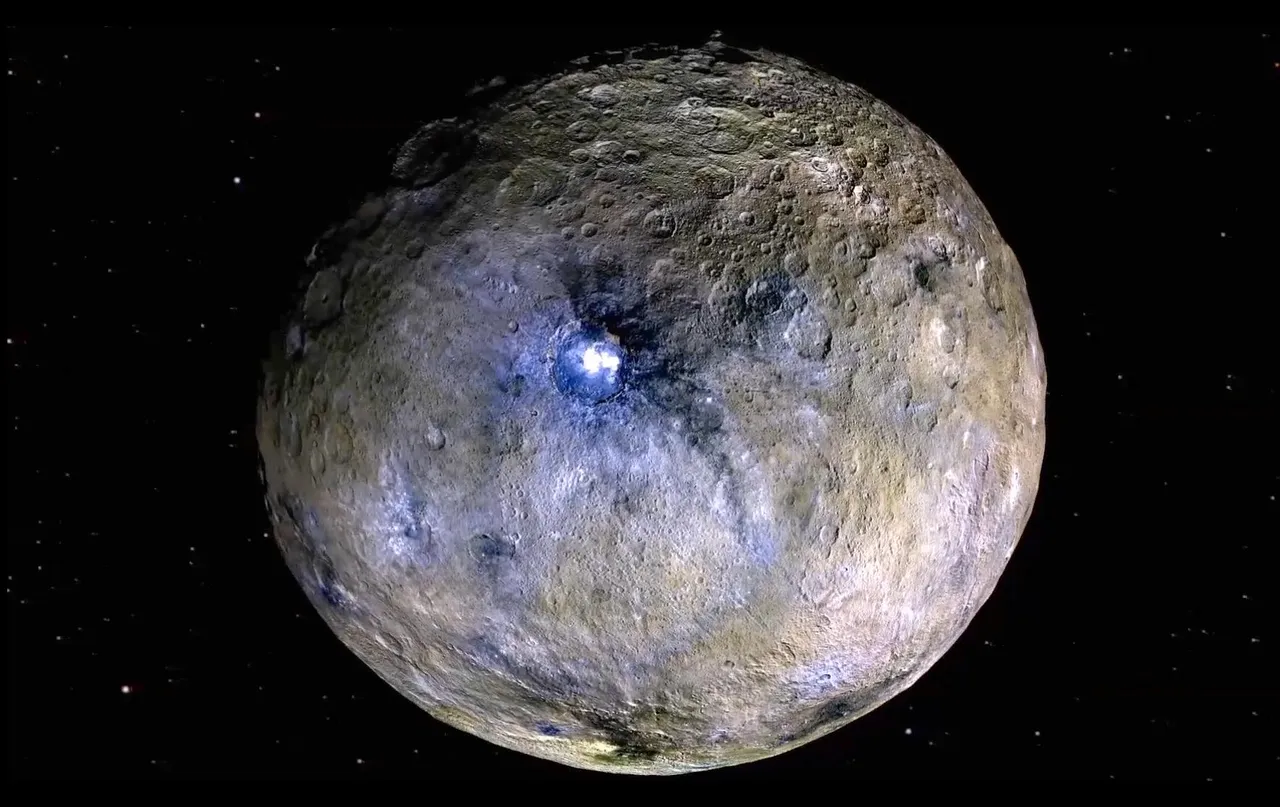Ceres is a dwarf planet in the asteroid belt and was once thought to be an asteroid. It is the largest object within the belt, counting to one third of the mass. It’s the largest in the belt but the closest and smallest dwarf planet, in our solar system. It’s thought to have a rocky core and an icy mantle.
Let’s go over the astral belt quickly. The Asteroid Belt is between Mars and Jupiter and the four largest objects are Ceres Vesta, Pallas and Hygiea. Over half a million asteroids have been discovered by scientists and there’s many more to be found. Some of these asteroids even have moons. Many people assume the asteroid belt is a violent place with many things crashing together but in fact it’s the opposite. It’s a very spacious area, to the point it would be difficult to see another asteroid once on one.
Now back onto Ceres which is thought to contain 1/10 of the water in Earth’s oceans. With plenty of water it could be mined, to create oxygen and rocket fuel. It’s also been hypothesised that salt might also exist on this planet.Ceres would be a suitable location for an asteroid mining and transportation hub. It would work better after Mars is colonized because of its close proximity. There are more windows of opportunity for launching and it’s more energy efficient, than from the Earth to Mars or Earth to our Moon. This would also help along with the colonization of Europa, other moons of Jupiter and beyond.
This dwarf planet is also close enough for solar power to be used. Unlike some of the other locations, Ceres temperature is warmer but still -73°C (-100°f) to -143°C (-225°f). A day would last around nine hours and 4 minutes while the length of a year is 4.6 Earth years. None of these situations is great for long term habitation for humans. This is why Ceres might be more suited for automated robots, with a small amount of people visiting the dwarf planet from time to time.
Ceres has extremely low levels of gravity, at only 3% of Earth’s. Low gravity is a negative thing but it is one of the few objects; that one could walk on in the asteroid belt. On other objects the gravity is so low; one would be able to literally jump off. It would also be easy to lift heavy material because its low gravity as everything would weigh 40% less.
Main disadvantages
Ceres would take a year to travel to from Earth. The confined space would need enough food and water, for at least one year of travel then more for arrival. While the distance from Mars is halved, it’s likely to have heavier equipment for mining.There’s barely any gravity, no atmosphere and no magnetic field. There is nothing to protect the surface from cosmic radiation or asteroid, comets and meteorites striking it. We can already see the affect from the many crates on the surface and this is a major risk, for any inhabitants or structures.
Terraforming is modifying an astral body to be more like Earth. I’ve mentioned it a couple of times; with Ceres it could cause another problem. Let’s say we use powerful greenhouse gases like SF6 to warm this planet. This would likely turn Ceres into a water world but with little gravity it’s unlikely, to be able to retain its water. In short most of it would be lost to space.
Source
https://solarsystem.nasa.gov/planets/dwarf-planets/ceres/overview/
https://www.space.com/31584-dwarf-planet-ceres-colonization-the-expanse.html


